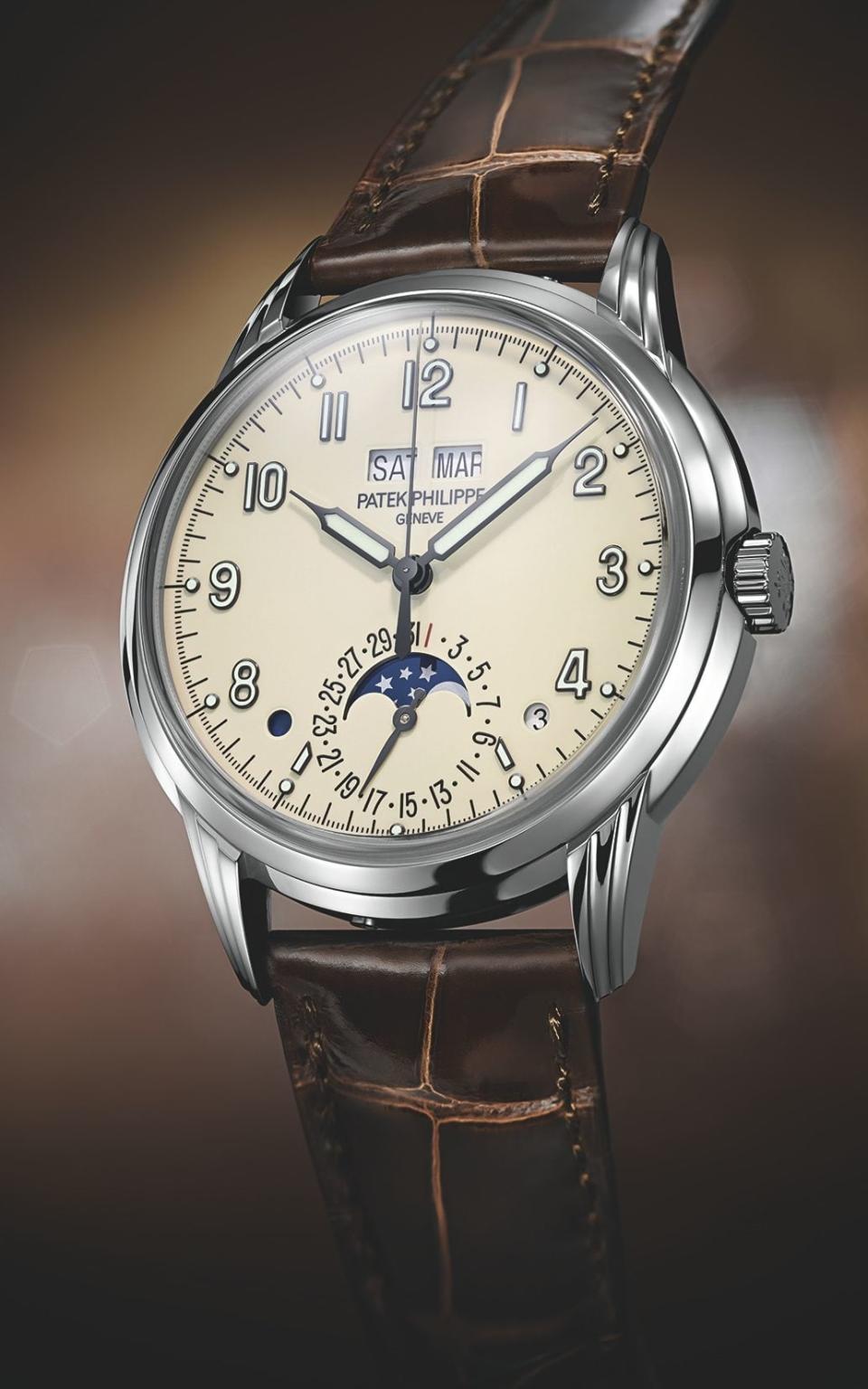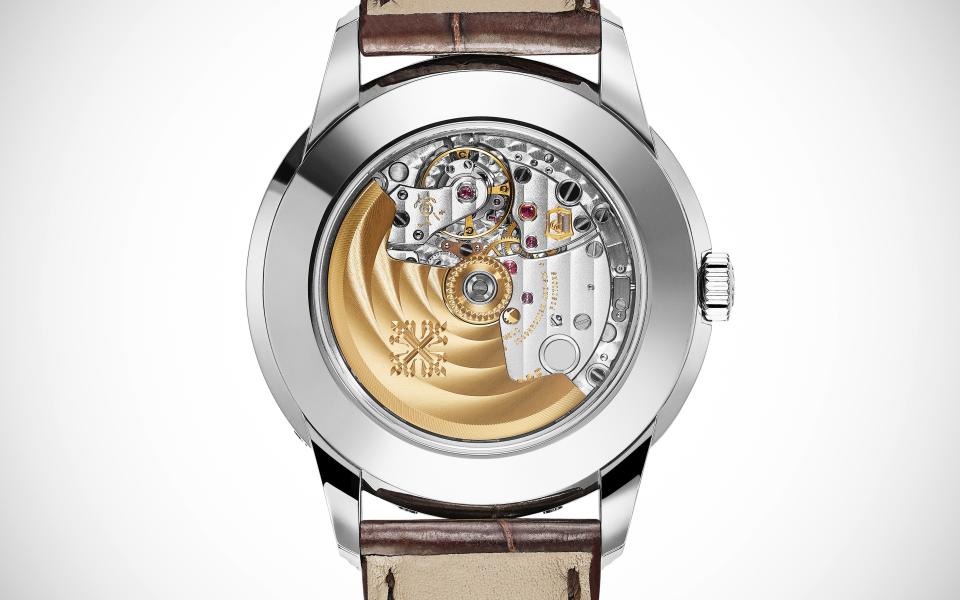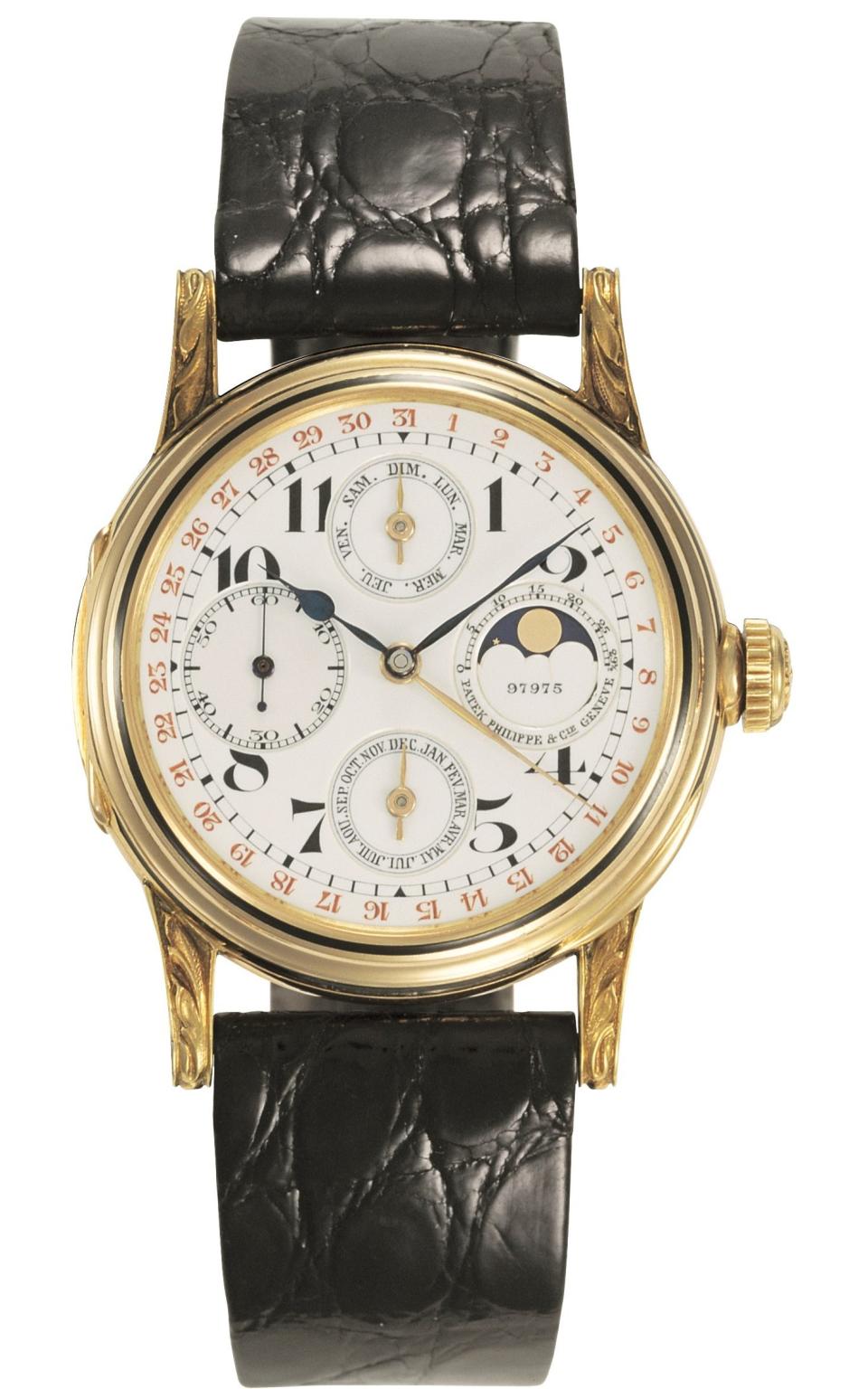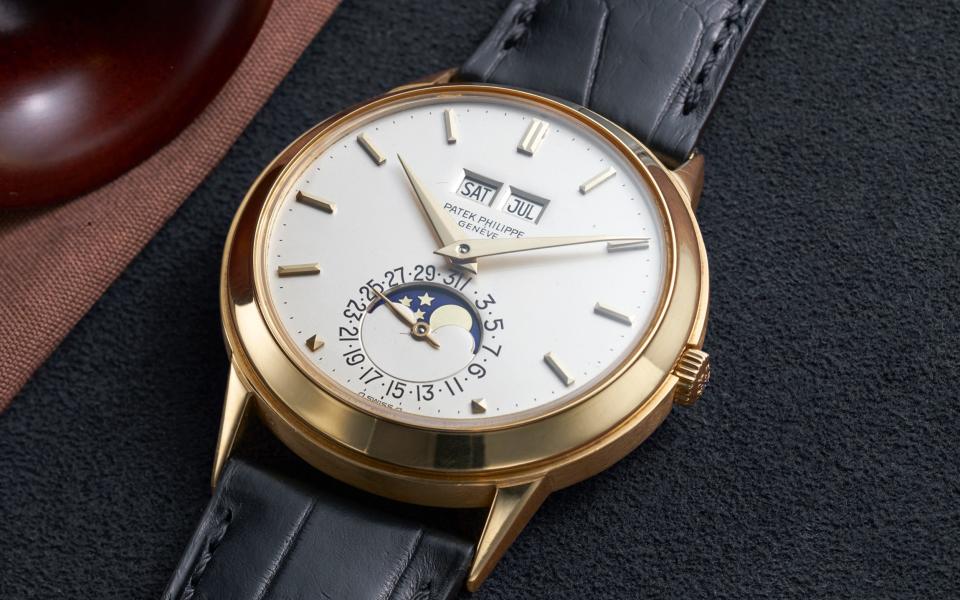Back to the Gilded Age: how Patek Philippe's new Perpetual Calendar Ref 5320G continues a fine legacy

There are certain complications that “belong” to certain brands and although it is far from the only house to have mastered it, Patek Philippe can be said to have made the perpetual calendar its own. Simply put, a new perpetual calendar – if you prefer the French, a quantième perpétuel, or QP – from Patek Philippe is an event. Having invented the wrist-worn perpetual calendar in 1925 when it made a timepiece known as Ref 97975, the Geneva marque is revisiting its signature complication 92 years on with the Ref 5320G.
The perpetual calendar was a key complication in the days when Patek supplied the great industrial barons and financial tycoons of the New World
Patek started making perpetual-calendar pocket watches in 1862, and in 1889 Swiss patent 1018 was granted to protect Adrien Philippe’s perpetual calendar mechanism. It was a key complication in the days when Patek supplied the great industrial barons and financial tycoons of the New World, a period that would culminate in 1933 with the delivery of the Graves Supercomplication (the most complicated watch then created).
The great titans of Gilded Age America were clearly enchanted by the magical notion that the small mechanical device at the end of their watch chains was able – in effect – to predict the future. An innate ability to inform its wearer of the day, date and state of the moon for decades into the future – even accounting for the untidiness of the Gregorian calendar with its months of varying length and its clumsy quadrennial addition of a day to the month of February.

Patek transferred the perpetual calendar to the wrist with ease. In the early 1940s it launched the Ref 1526, the first series-produced wristwatch perpetual and the model which established the signature dial configuration: two rectangular windows displaying the day and month in the upper half of the dial, with the moon phase and date on a subdial below.
In 1962, a century after introducing its first QP, Patek debuted its first self-winding perpetual calendar. In an internal newsletter, it described the Ref 3448 automatic perpetual calendar as “the watch that thinks”, summing it up as “one of the most amazing personal timepieces ever designed. Automatically, with no need for the owner to correct it for long or short months, it shows the time, the day, the month, the date, and the phase of the moon… the Patek Philippe Perpetual Calendar Watch needs no reminder from you that February 30 doesn’t exist. All by itself, it also remembers to avoid such absurdities as the 31st of September, April, June, and November, for this is the wonder watch that thinks for itself.”

And when Patek embarked on its historically significant strategy to reintroduce complicated mechanical wristwatches in the 1980s, it was an automatic perpetual calendar, the Ref 3940, that appeared first, using a movement based on the legendary ultra-slim, self-winding Calibre 240Q, with the rectangular apertures replaced by two dials at 3 o’clock and 9 o’clock. It was a combination of movement and dial design that can still be appreciated today in the Ref 5139 and the cushion-cased Ref 5940 (to my mind one of the most beautiful of contemporary Pateks).
With the 5320, Patek revisits the elegant dial design of the 1526 and 3448, with its day and month apertures at 12 o’clock and moon phase and date dial at 6 o’clock. It’s an exquisite exercise in balance that is carried as far as the leap-year indicator, which appears between 4 and 5 o’clock.
With the 5320, Patek revisits the elegant dial design of the 1526 and 3448
I’ve never been an unqualified admirer of this additional display, as I felt it destroyed the symmetry of a near-perfect dial design. Happily, the 5320 addresses this issue and the leap year indicator is mirrored by the day-night indicator between 7 and 8 o’clock.
The movement, too, marks a break with the perpetual calendars of the past three decades. Instead of the 240Q with its micro-rotor, this watch is powered by the Calibre 324 SQ, which is rewound by a full-sized rotor. It may be just under 1.25mm higher, but at 4.97mm it’s hardly obese – and thanks to the larger rotor, the rewinding should be quicker.

Nevertheless you’d expect Patek to know how to make a good perpetual calendar movement by now, so arguably more interesting is the design of the case and dial. White gold imparts a functional elegance with a hint of sportiness; a feeling that continues in the dial. The SuperLuminova-filled syringe hands recall those of vintage chronographs of the 1950s and 1960s, and together with the no-nonsense, lume-heavy arabic numerals in blackened gold (a nice contemporary touch), they add an air of purposeful elegance to the cream lacquer dial.
Like other recent Patek designs, particular attention is paid to the lugs – here executed in an architectural triple-stepped style that has an art deco nuance found in various historic models (“retro-modernistic” is how Patek describes it).
Yet for all these historical design cues and vintage Patek references, the 5320 avoids toppling over into a pastiche of the past. The execution is fresh, purposeful, confident and easy to read. Its strength is that it manages to be Janus-faced; addressing its distinguished bloodline as well as hinting as to future directions the perpetual calendar might take at Patek Philippe… after all, the centenary of the perpetual wristwatch is only eight years away.
Patek Philippe: The Authorised Biography (£175), by Nicholas Foulkes, is out now

 Yahoo Finance
Yahoo Finance 